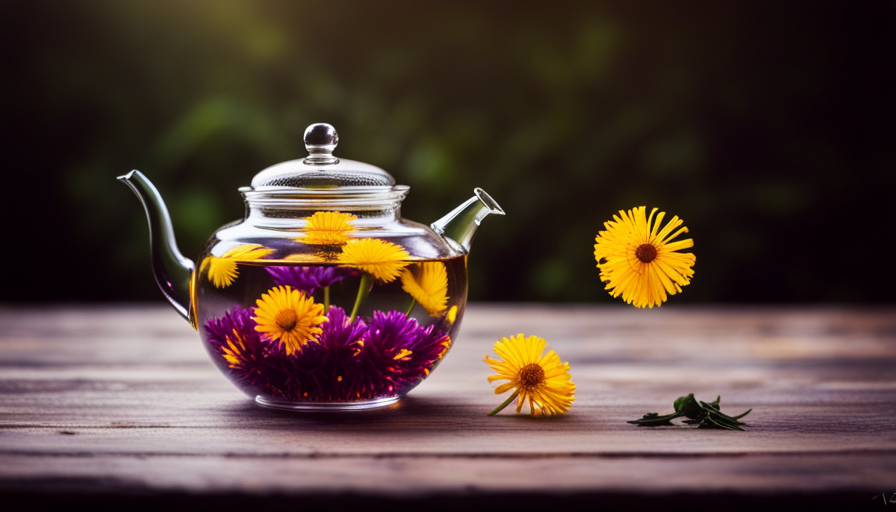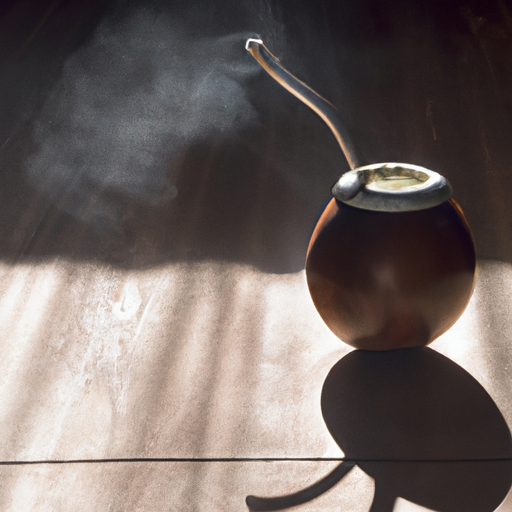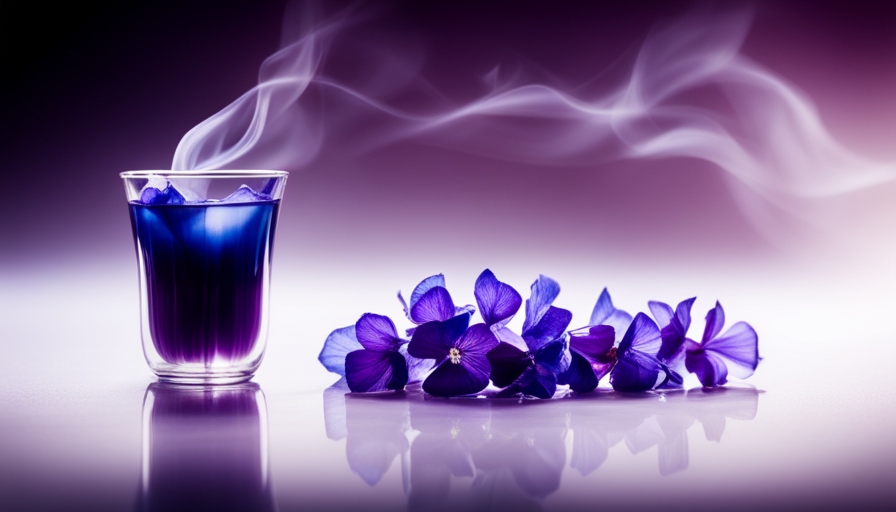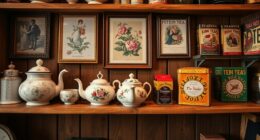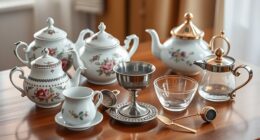As I sit here observing the lively hues of spring around me, I am struck by nature’s beauty and strength. The gentle petals of dandelions and violets sway in the wind, spreading their delightful scent. It motivates me to preserve their essence, their medicinal qualities, in a comforting cup of tea.
Making dandelion flower and violet tea is not only a delightful way to indulge in nature’s gifts, but it also holds a treasure trove of health benefits. From soothing digestive woes to boosting immune function, this herbal concoction is a true elixir for the body and soul.
In this article, I will guide you through the process of gathering fresh dandelion flowers and violets, preparing them for brewing, and steeping them in boiling water. I will also share optional sweeteners or enhancements to elevate your tea-drinking experience. Additionally, I will explore the various health benefits of this tea, as well as other creative uses for dandelion flowers and violets.
So, join me on this journey of exploration and let’s savor the magic of dandelion flower and violet tea together.
Key Takeaways
- Dandelion flower and violet tea offers a range of health benefits, including soothing digestive issues and boosting immune function.
- The tea can be customized with sweeteners or enhancements like agave nectar, lavender honey, or lemon zest.
- Gather fresh dandelion flowers and violets on a sunny day, ensuring they are free from pesticides and pollution.
- To make the tea, prepare the petals by gently removing them from the flowers and drying them. Then, steep the flowers in boiling water for 5-10 minutes and strain before serving.
Introduction to Dandelion Flower and Violet Tea
If you’re looking for a unique and floral tea experience, you’ll love learning about how to make dandelion flower and violet tea. This delightful tea not only offers a distinct taste, but it also provides a plethora of health benefits.
Dandelion flowers are known for their liver-cleansing properties and their ability to aid digestion. Violets, on the other hand, are rich in antioxidants and can help reduce inflammation in the body. Combining these two flowers creates a tea that’s not only delicious but also beneficial for your overall well-being.
One of the best aspects of dandelion flower and violet tea is that you can experiment with different variations. For a soothing and calming effect, you can add chamomile or lavender to the mix. If you prefer a stronger flavor, you can incorporate rose petals or hibiscus flowers. The possibilities are endless, allowing you to tailor the tea to your personal preferences.
To start creating this delightful tea, the first step is to gather fresh dandelion flowers and violets. These can often be found in meadows or gardens during the springtime when they’re in full bloom. Once you have collected the flowers, you can proceed to the next section where we’ll explore how to properly prepare and steep them to create a delightful cup of dandelion flower and violet tea.
Gather Fresh Dandelion Flowers and Violets
First, head outside and start gathering those vibrant dandelion flowers and delicate violets. These beautiful blossoms will be the star ingredients in your dandelion flower and violet tea. To ensure the best flavor and quality, follow these simple steps:
- Choose a sunny day to gather the flowers when they’re fully bloomed.
- Look for dandelion flowers with bright yellow petals and violets with deep violet or purple petals.
- Carefully pluck the flowers, making sure to remove any stems or leaves.
- Collect enough dandelion flowers and violets to make a generous amount of tea.
- Be mindful of the environment, only pick flowers from areas free of pesticides and pollution.
Now that you’ve gathered your fresh dandelion flowers and violets, it’s time to prepare them for brewing. By taking these steps, you’ll ensure the flavors and benefits of the flowers are preserved in your tea.
Prepare the Flowers for Brewing
Now that you’ve gathered your vibrant dandelion flowers and delicate violets, it’s time to get these blossoms ready for brewing. To ensure the best flavor and aroma in your tea, it’s important to properly prepare the petals. Start by gently removing the petals from the dandelion flowers and violets, discarding the stems and any damaged or discolored petals.
Next, you’ll want to dry the petals before brewing. This will help preserve their flavors and prevent any moisture from affecting the taste of your tea. There are a few drying techniques you can choose from:
-
Air drying: Spread the petals on a clean, dry surface, such as a baking sheet or a wire rack. Leave them in a well-ventilated area away from direct sunlight until they become crisp and brittle. This usually takes about a week.
-
Oven drying: Preheat your oven to its lowest setting. Place the petals in a single layer on a baking sheet and place it in the oven. Leave the oven door slightly ajar to allow moisture to escape. Check the petals regularly and remove them once they are dry and crumbly.
-
Dehydrator: If you have a food dehydrator, you can use it to dry the petals. Simply follow the manufacturer’s instructions for drying flowers or herbs.
Once the petals are properly dried, you’re ready to move on to the next step: boiling water and steeping the flowers.
Boil Water and Steep the Flowers
To create a truly enchanting brew, let the water come to a rolling boil and infuse the petals with their vibrant essence. Boiling water is a crucial step in extracting the flavors and benefits from dandelion flowers and violets. When boiling the water, it’s important to use a clean pot and fresh water to avoid any unwanted flavors.
You can use any boiling technique you prefer, whether it’s on the stovetop or using an electric kettle.
Once the water reaches a rolling boil, carefully pour it over the prepared dandelion flowers and violets in a heat-resistant container. Make sure the flowers are fully submerged in the water to ensure maximum infusion. Allow the petals to steep for about 5-10 minutes, depending on your desired strength.
During this time, the hot water will work its magic, extracting the beautiful colors and delicate flavors of the flowers. You may notice the water changing color as the petals release their essence.
After the steeping time is complete, strain the tea to remove any petals or debris. Now, it’s time to move on to the next step of adding sweeteners or enhancements (optional), which’ll further enhance the flavors and create a delightful experience.
Add Sweeteners or Enhancements (optional)
Enhance your brew with a spoonful of honey or a splash of citrus to create a sensational symphony of flavors. Adding sweeteners or enhancements to your dandelion flower and violet tea can elevate the taste and make it even more enjoyable.
Here are three options to consider:
-
Agave Nectar: This natural sweetener derived from the agave plant adds a subtle sweetness to your tea without overpowering the delicate flavors of the flowers. It dissolves easily and blends well with the herbal notes of the tea.
-
Lavender Honey: Infused with the essence of lavender, this specialty honey brings a unique floral twist to your cup of tea. Its aromatic flavor complements the dandelion and violet, creating a harmonious combination that’s both soothing and indulgent.
-
Lemon Zest: For a refreshing citrus kick, add a few strips of lemon zest to your tea. The bright and tangy flavors of the lemon zest cut through the earthiness of the flowers, resulting in a vibrant and invigorating taste.
By enhancing the flavors with these alternative sweeteners, you can customize your dandelion flower and violet tea to suit your preferences. Once you’ve added your chosen sweetener or enhancement, it’s time to strain and serve the tea, allowing you to enjoy its delightful flavors and aromas.
Strain and Serve the Tea
When it’s time to enjoy your exquisite creation, strain the tea to remove any leftover petals or leaves, and serve it in your favorite tea cup to savor the rich flavors and intoxicating aroma. Straining the tea is an important step to ensure a smooth and enjoyable drinking experience.
There are a few different straining techniques you can use, depending on your preference. One common method is to use a fine mesh strainer or a cheesecloth to remove any solid particles from the tea. Simply pour the brewed tea through the strainer or wrap the cheesecloth around the opening of your teacup and pour the tea through it. This will leave you with a clear and vibrant cup of tea, free from any unwanted debris.
Once your tea is strained, it’s time to serve and enjoy. You can enhance the experience by adding a slice of lemon or a sprig of mint for a refreshing twist. If you prefer a sweeter taste, you can add a teaspoon of honey or a sprinkle of sugar. As you take your first sip, let the flavors dance on your tongue and revel in the soothing warmth that the tea brings.
Now that you’ve learned how to strain and serve the tea, let’s explore the health benefits of dandelion flower and violet tea.
Health Benefits of Dandelion Flower and Violet Tea
Immerse yourself in a world of wellness as you discover the myriad health benefits that await in a steaming cup of dandelion flower and violet tea. This delightful infusion not only tantalizes the taste buds but also provides a wide range of health benefits. Let’s delve into the history of dandelion flower and violet tea and explore some dandelion flower and violet tea recipes.
Dandelion flower and violet tea have been enjoyed for centuries due to their medicinal properties. The dandelion flower is known for its detoxifying effects, aiding in liver function and promoting healthy digestion. Violets, on the other hand, are rich in antioxidants, which help combat inflammation and boost the immune system. Together, these flowers create a powerful elixir that promotes overall well-being.
To illustrate the health benefits of dandelion flower and violet tea, consider the following table:
| Health Benefit | Dandelion Flower | Violet |
|---|---|---|
| Detoxification | Yes | No |
| Digestive Health | Yes | No |
| Immune Boost | No | Yes |
As you can see, dandelion flower tea excels in detoxification and digestive health, while violet tea shines in boosting the immune system. Incorporating both teas into your routine can provide a well-rounded approach to wellness.
Now that we have explored the health benefits of dandelion flower and violet tea, let’s move on to the next section, where we will uncover other uses for dandelion flowers and violets.
Other Uses for Dandelion Flowers and Violets
Embrace the versatility of dandelion flowers and violets as you discover their numerous applications beyond brewing them into a soothing cup of tea.
Dandelion flowers have a wide range of uses beyond their medicinal properties. Firstly, they can be used in cooking as a unique addition to salads, soups, or stir-fries. Their vibrant yellow petals add a pop of color and a slightly bitter flavor to any dish. Additionally, dandelion flowers can be transformed into a delicious and nutritious jelly or syrup, perfect for spreading on toast or drizzling over desserts.
On the other hand, violets also offer a variety of benefits. Apart from being a beautiful addition to gardens and floral arrangements, violets have culinary uses too. Their delicate flowers can be candied and used as a decorative touch on cakes and pastries. Furthermore, violets can be infused into vinegar or oil, adding a subtle floral flavor to dressings or marinades.
With so many uses for dandelion flowers and benefits of violets, it’s clear that these botanical wonders have more to offer than just tea. Now, let’s explore some tips and tricks for brewing the perfect cup.
Tips and Tricks for Brewing the Perfect Cup
When it comes to brewing the perfect cup of dandelion flower and violet tea, there are a few tips and tricks that can take your experience to the next level. First and foremost, it’s important to choose high-quality flowers that are free from pesticides or other chemicals. This ensures that you’re getting the best flavor and health benefits from your tea.
To enhance the flavor of your tea, you can experiment with different brewing techniques. For example, steeping the flowers for a longer period of time can result in a stronger, more robust flavor. On the other hand, if you prefer a lighter taste, you can steep the flowers for a shorter duration. Additionally, you can try combining different flowers and herbs to create unique flavor combinations. Some popular options include adding chamomile for a calming effect or mint for a refreshing twist.
To help you keep track of your brewing experiments, here’s a handy table to record your findings:
| Brewing Technique | Steeping Time | Flavor |
|---|---|---|
| Long steep | 10 minutes | Robust |
| Short steep | 5 minutes | Light |
| Chamomile blend | 7 minutes | Calming |
| Mint blend | 5 minutes | Refreshing |
By exploring different variations and recipes, you can find the perfect combination that suits your taste buds. So let’s dive into the next section and discover even more ways to enjoy dandelion flower and violet tea.
Explore Different Variations and Recipes
Discover the endless possibilities of creating unique flavor combinations and recipes using various herbs and flowers to elevate your tea experience. When it comes to dandelion flower tea, there are several variations that you can explore.
One popular option is to combine dandelion flowers with other herbs like chamomile or mint to create a soothing and refreshing blend. Another variation is to add a hint of citrus by including lemon or orange peel. This adds a zesty twist to the floral notes of the dandelion flowers. For those who prefer a stronger flavor, you can experiment with adding spices like cinnamon or ginger to create a spiced dandelion tea.
On the other hand, violet tea offers its own unique benefits. Violet petals are rich in antioxidants and are known for their anti-inflammatory properties. Drinking violet tea can help promote healthy skin and boost the immune system.
To make violet tea, simply steep a handful of fresh violet petals in hot water for about 5 minutes. You can also add a touch of honey or lemon to enhance the flavor.
Incorporating these variations and exploring different recipes can add excitement and depth to your tea repertoire. Whether you prefer the delicate floral notes of dandelion flower tea or the antioxidant-rich benefits of violet tea, there’s a wide range of possibilities to explore and enjoy.
Frequently Asked Questions
Are dandelion flowers and violets safe to consume?
Dandelion flowers and violets are indeed safe to consume and offer potential health benefits and culinary uses. They’re packed with antioxidants and vitamins, promoting a healthy immune system and aiding digestion. Dandelion flowers can be used in salads or made into tea, while violets add a touch of sweetness to desserts and beverages. So go ahead and indulge in these delightful blooms, knowing they’re not only safe but also beneficial for your well-being.
Can I use dried dandelion flowers and violets instead of fresh ones?
Yes, you can absolutely use dried dandelion flowers and violets in tea instead of fresh ones. However, it’s important to note that using fresh flowers in tea has its benefits. Fresh flowers have a stronger taste and aroma, which can enhance the overall flavor of the tea. Additionally, fresh flowers may retain more of their natural compounds and nutrients compared to dried flowers. Nonetheless, dried flowers are still a viable option and can be used to make a delicious and calming tea.
How long should I boil the water before steeping the flowers?
Boiling time plays a crucial role in achieving a perfect flower infusion. To extract the delicate flavors and beneficial properties from dandelion flowers and violets, it’s recommended to boil the water for approximately 5 minutes before steeping the flowers.
This allows the water to reach the ideal temperature, ensuring a thorough extraction of the flowers’ essence. By carefully managing the boiling time, you can create a delightful and aromatic tea that captures the essence of these beautiful flowers.
What are some common sweeteners and enhancements that can be added to the tea?
When it comes to sweetening dandelion flower and violet tea, there are several options to choose from. Common sweeteners include honey, agave nectar, or stevia, which can add a touch of sweetness without overpowering the delicate floral flavors.
As for flavor enhancements, you can experiment with adding a squeeze of lemon or a splash of vanilla extract to enhance the taste. These additions can elevate the tea and create a more enjoyable drinking experience.
Are there any potential side effects or precautions to consider when drinking dandelion flower and violet tea?
When it comes to dandelion flower and violet tea, it’s important to be aware of any potential side effects or precautions. While generally considered safe, some individuals may experience allergic reactions to these flowers. It’s recommended to start with a small dosage and monitor your body’s response.
These teas are known for their potential health benefits such as promoting digestion and soothing sore throats. However, it’s always best to consult with a healthcare professional before incorporating them into your routine.
Conclusion
In conclusion, making dandelion flower and violet tea is a simple and rewarding process. By gathering fresh flowers and preparing them for brewing, you can enjoy a delicious and healthful beverage. Steep the flowers in hot water to extract their flavors and benefits. The tea offers numerous health benefits and can also be used in various other ways. With a few tips and tricks, you can brew the perfect cup every time. So, embrace the world of dandelion flowers and violets, and explore different variations and recipes to find your favorite blend. Cheers to a delightful tea experience!

